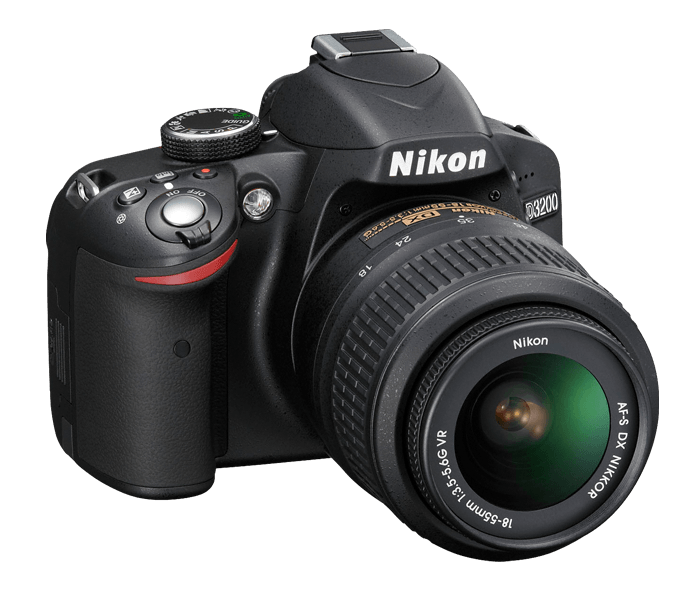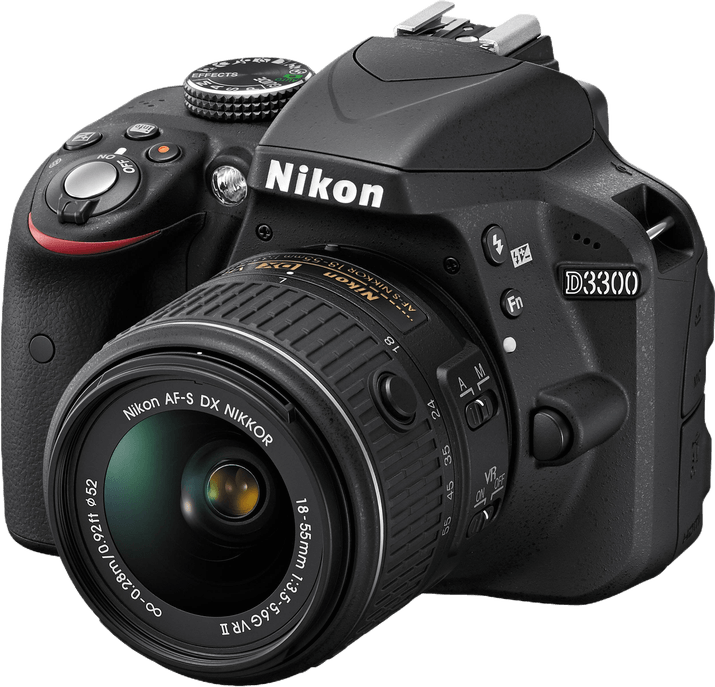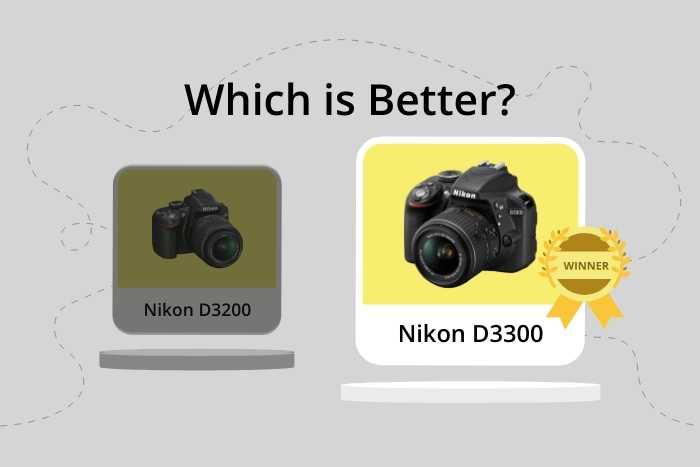Nikon D3200 vs D3300 Comparison
Nikon D3200

Nikon D3300

The Nikon D3300 comes out on top with a score of 55/100, while the Nikon D3200 trails closely behind at 54/100. Both cameras are DSLRs and share similar dimensions, with the D3300 measuring 124 x 98 x 76mm and the D3200 at 125 x 96 x 77mm. The D3300 has a slight advantage in weight, being lighter at 430g compared to the D3200’s 505g.
The D3300 was released in 2014, two years after the D3200’s 2012 release, and initially retailed at a lower price of $650 as opposed to the D3200’s $699. This makes the D3300 a more cost-effective and lightweight option.
The D3200, however, still holds its own with a near-identical score to the D3300. This suggests that users can expect similar performance and quality from both cameras, despite the D3300’s slight advantages in weight and price.
Taking these factors into account, the Nikon D3300 is the better option, but the D3200 remains a viable choice for those seeking a slightly older model.
Nikon D3200 vs D3300 Overview and Optics
The Nikon D3300 outperforms the Nikon D3200 in optics with a score of 64/100 compared to the D3200’s 63/100. Both cameras share several specifications, such as 24.2 megapixels, a CMOS sensor type, an APS-C sensor size, a Nikon F DX lens mount, and no image stabilization.
The D3300 gains an advantage with its Expeed 4 processor and a DXOMARK sensor score of 82. This improved processor allows for faster shooting speed at 5 frames per second compared to the D3200’s 4 frames per second. The higher DXOMARK sensor score indicates that the D3300 has better overall image quality and low-light performance.
On the other hand, the D3200 has an Expeed 3 processor and a DXOMARK sensor score of 81. While it may be slightly less powerful than the D3300, it still produces high-quality images and performs well in most shooting situations. The difference in performance between the two cameras is minimal, and the D3200 remains a reliable choice for photographers.
Considering the optics, the Nikon D3300 stands out as the better camera due to its faster shooting speed and slightly better sensor performance. However, the Nikon D3200 is still a solid option for those who prioritize image quality and performance. The choice between the two cameras ultimately depends on the individual photographer’s needs and preferences.
Nikon D3200 vs D3300 Video Performance
The Nikon D3300 emerges as the winner in the video capabilities comparison, outscoring the Nikon D3200 by 13 points (56/100 to 43/100). Both cameras share some common specifications, such as Full HD video resolution and maximum video dimensions of 1920 x 1080. Additionally, neither camera has built-in time-lapse functionality.
The Nikon D3300 excels in video performance as it offers a higher maximum video frame rate of 60fps, compared to the Nikon D3200’s 30fps. This higher frame rate results in smoother video playback, making the D3300 a more suitable option for capturing fast-moving subjects or creating slow-motion effects.
On the other hand, the Nikon D3200 does not have any significant advantages in video capabilities over the D3300. Both cameras lack time-lapse functionality, and the D3200’s lower frame rate of 30fps makes it less versatile in capturing various types of video content.
Considering these factors, the Nikon D3300’s superior frame rate of 60fps makes it the better choice for users who prioritize video recording capabilities in their DSLR cameras. Its higher score of 56/100 reflects its improved performance in this area. Meanwhile, the Nikon D3200, with a score of 43/100, may still be suitable for casual video recording, but users seeking a more versatile video experience should opt for the D3300.
Nikon D3200 vs D3300 Features and Benefits
The Nikon D3200 and the Nikon D3300 both have a feature score of 41 out of 100, making them equal in this aspect. These cameras share several specifications, including a 3-inch screen size, 921,000-dot screen resolution, and the absence of a touchscreen, flip screen, GPS, WiFi, and Bluetooth.
Despite the identical feature scores, the Nikon D3300 stands out as a better camera in some aspects. It is an upgraded version of the D3200, which means it has improved performance and additional features not found in the D3200. The D3300 has a faster continuous shooting speed, allowing it to capture more frames per second. This makes it more suitable for action photography and capturing fast-moving subjects. It also has a longer battery life, enabling photographers to take more shots before needing to recharge.
On the other hand, the Nikon D3200 has its advantages as well. It is generally more affordable than the D3300, making it a better option for those on a tight budget or beginners looking for an entry-level DSLR. Additionally, the D3200 has a slightly higher dynamic range, which can result in better image quality in certain situations.
Considering the shared specifications and the individual advantages of each camera, the Nikon D3300 is a better choice for those seeking improved performance and additional features, while the Nikon D3200 is a more budget-friendly option with a slightly higher dynamic range. Both cameras offer good value for their respective target audiences, and the choice between them ultimately depends on individual preferences and priorities.
Nikon D3200 vs D3300 Storage and Battery
The Nikon D3300 outperforms the Nikon D3200 in storage and battery with a score of 32/100 compared to the D3200’s 27/100. Both cameras share similarities in their storage capabilities, as they each have one memory card slot and accept SD, SDHC, and SDXC memory cards. The D3300, however, is UHS-I compatible, giving it an advantage in storage performance.
Regarding battery life, the D3300 is the clear winner with 700 shots per charge, while the D3200 allows for 540 shots. Both cameras use different battery types: the D3200 uses the EN-EL14, while the D3300 uses the more advanced EN-EL14a. Neither camera has USB charging.
In terms of storage and battery, the Nikon D3300 is superior to the D3200 due to its UHS-I compatibility and longer battery life. Although the D3200 is not as strong in these aspects, it still offers decent performance for its class. Ultimately, the D3300 is the better option for those prioritizing storage and battery capabilities.
Nikon D3200 vs D3300 Alternatives
Still not sure which Nikon DSLR is the best choice for you? Try some of these trending comparisons for more inspiration:

